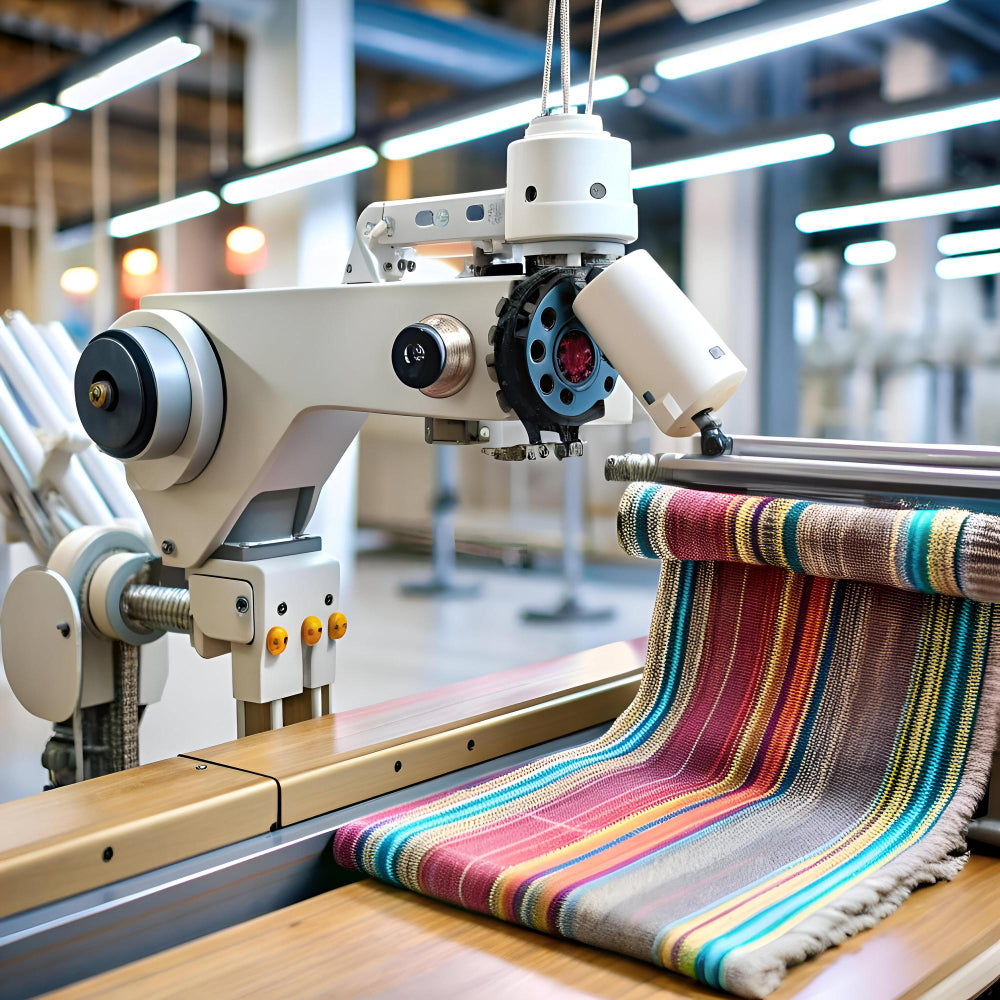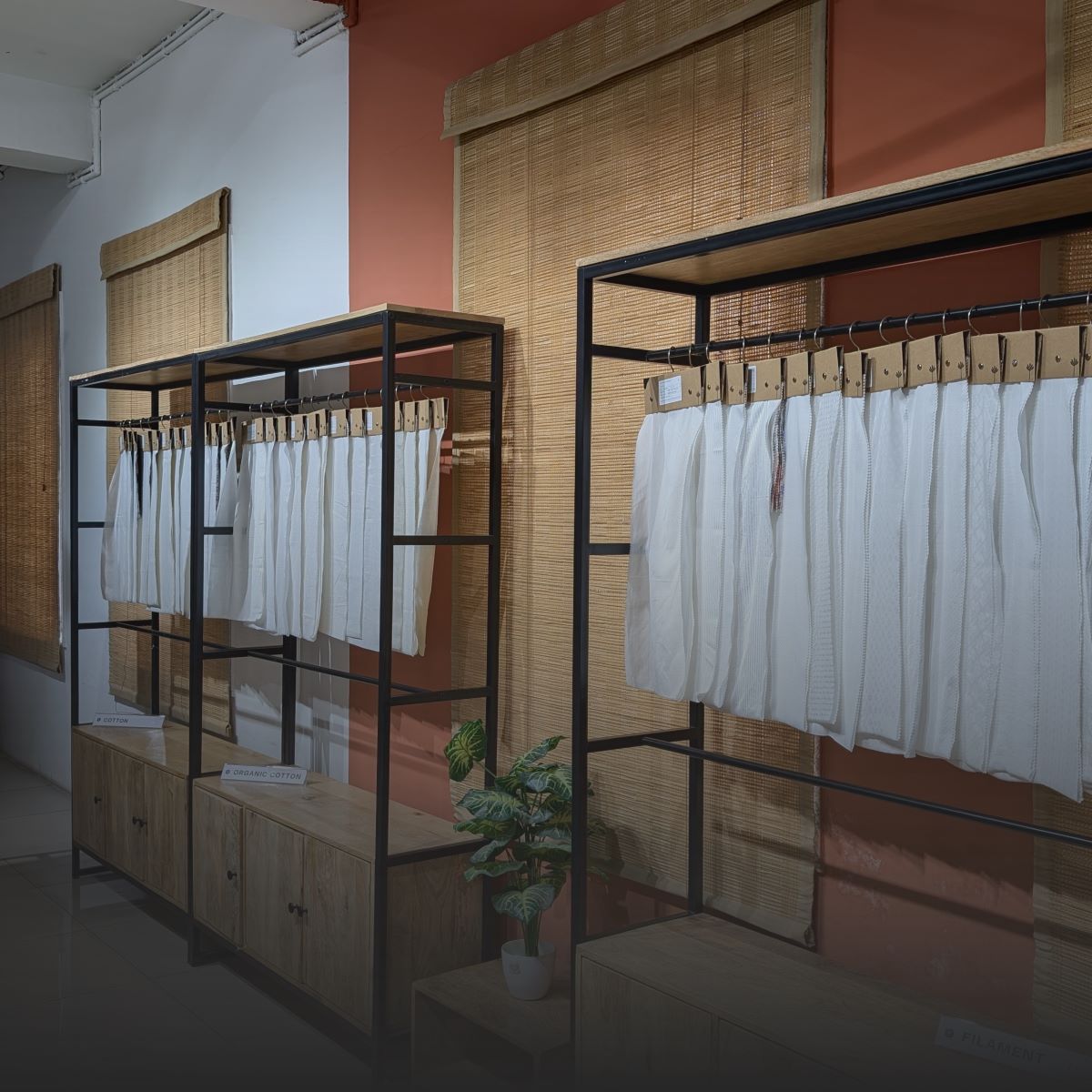As global textile demand rises alongside environmental regulations and digital disruption, Eastern Europe is no longer just a low-cost manufacturing zone. Instead, it’s rapidly becoming a hub for smart, sustainable textile innovation. The region is leveraging its strong industrial base, EU alignment and emerging tech talent to transform its position in the global textile value chain.
New ideas are changing how fabrics are made, tracked and used — from eco-friendly materials to factories using smart AI and blockchain for better transparency. In this article, we look at ten important textile innovations coming from Eastern Europe that will shape the industry in 2025 and beyond.
Key Textile Innovations Shaping Eastern Europe in 2025

1. Rise of Sustainable Fabrics and Eco-Innovation
Across Eastern Europe, the textile industry is shifting toward eco-friendly materials that reduce harm to the environment. Manufacturers are moving away from synthetic fibers and focusing on textiles made from bio-based, recycled and low-impact sources. Materials made from wood pulp and leftover crops are becoming popular because they are renewable and break down naturally without harming the environment.
This transition is supported by the EU’s Ecodesign for Sustainable Products Regulation (ESPR), which encourages sustainable design and responsible material choices right from the start.
Startup to Know: The New Norm is leading with its innovative use of 3D printing and circular design practices to create sustainable fashion pieces that are both stylish and low-waste.
Where It’s Being Used:
- Custom fashion accessories made with eco-materials
- Outerwear designed from waste-based fabrics
Why This Matters
Sustainable fabric innovation helps brands lower their environmental impact and meet rising consumer demand for greener products. It's not just a trend—it’s a core shift that prepares businesses for stricter regulations and a future where circularity is key.
2. Advanced Textile Recycling and Upcycling

Textile waste is a growing problem and Eastern Europe is finding new ways to turn this waste into valuable resources. Innovations in recycling are moving beyond simple sorting. New methods like chemical depolymerization break down blended fabrics into raw materials that can be reused. Mechanical shredding of old clothes is also improving, helping to recover fibers that once were hard to recycle.
Projects like the T-REX initiative are aiming to recycle millions of tonnes of textile waste by 2030. This shows a clear commitment to closing the loop on textile production and waste management.
Startup to Watch: Sortile uses artificial intelligence to sort and analyze textile waste more accurately. This speeds up recycling and helps separate materials that can be reused in different ways.
Practical Uses:
- Creating new fabric from recycled fibers for circular clothing lines
- Industrial reuse of recovered fibers in insulation or upholstery
Why This Matters
Recycling and upcycling help lower the use of new raw materials and reduce the amount of waste sent to landfills. For you, as a brand or consumer, supporting recycled textiles means less pollution and a stronger chance of keeping materials in use longer. This approach also fits with stricter rules on waste and sustainability coming into effect across Europe.
3. AI and Big Data Integration: Smarter Textile Production

Artificial intelligence (AI) and big data are changing the way textiles are designed, made and managed in Eastern Europe’s supply chains. These technologies help predict customer trends, monitor fabric quality and optimize inventory levels.
Startups like Pleneri use AI to forecast demand, reducing overproduction and waste. AI-powered quality control detects defects early, improving product consistency.
Additionally, Sortile applies AI and analytics to improve textile recycling processes, making waste sorting more efficient.
Why This Matters
AI and big data enable more accurate planning and resource use. They help reduce errors, cut waste and respond faster to market changes. This means better cost management and more sustainable production for textile businesses.
4. Smart Factories (Industry 4.0): Digitalizing Textile Manufacturing

Smart factories are changing how textile plants operate in Eastern Europe. Using tools like digital twins, IoT devices and predictive analytics, factories can monitor every step of production in real-time.
Projects like Textile Factory 7.0 (T7) lead this shift by integrating these technologies to reduce resource waste and prevent machine failures before they happen.
Factories use sensors to monitor energy consumption and machine conditions. This helps managers make smart choices to reduce costs and boost efficiency.
Why This Matters
Digital manufacturing helps reduce delays and cut costs. It allows companies to use energy efficiently and keep production running smoothly. This also helps the environment by using fewer resources and creating less waste.
5. Robotics & Automation in Production

Robots are now helping in textile factories by doing hard and repetitive jobs like sewing and cutting. This doesn’t mean replacing workers; it’s about speeding up the work and making it more efficient.
Companies such as Robotextile GmbH use AI-powered robots that can work alongside humans. These robots take on time-consuming jobs, helping factories produce garments more quickly and with fewer mistakes.
This means brands can make exactly what customers want when they want it. Smaller batches and on-demand production reduce waste and inventory costs. It also makes bringing production back to Europe easier, cutting delays and shipping costs.
Why should you care?
Faster production means new designs reach you sooner. Better quality control means you get garments that last longer. Plus, reshoring helps local economies and reduces the carbon footprint of shipping.
6. Customization & On-Demand Production: Making What You Really Want

Fashion is shifting from mass production to making pieces just for you. Digital manufacturing tools now allow brands to produce single items or small batches without extra cost.
This means less waste. Brands don’t have to guess what will sell and then overproduce. Instead, they make exactly what customers order, reducing leftover stock and unsold clothes.
You get more personalized options, too. Whether it’s a specific size, color or design, on-demand production can meet your unique preferences faster than traditional methods.
Why does this matter to you?
You avoid buying generic items that don’t fit well or suit your style. Plus, you support a system that cuts waste and lowers environmental impact.
7. Waterless Dyeing & Digital Printing: Reducing Water, Enhancing Creativity

Traditional dyeing is one of the most water-intensive processes in the textile industry. But new innovations are turning the tide—literally. In Eastern Europe, more manufacturers are adopting waterless dyeing techniques, such as supercritical CO₂ dyeing for synthetics and digital inkjet printing for cotton and blends.
These methods not only save up to 90% of water, but they also eliminate the need for harsh chemicals and long dyeing cycles. With digital printing, designs can be produced directly onto fabric in vibrant detail, offering both sustainability and speed.
Why this matters:
These technologies are helping the textile industry use much less water, especially in areas where water is scarce. For designers and shoppers, this means clothes can be made faster, with custom prints and with less harm to the environment.
Startup to Watch: OurCarbon — They’re converting carbon waste into natural dye alternatives, giving a second life to emissions while coloring your clothes responsibly.
8. Smart Textiles & Functional Fabrics

A big trend in Eastern Europe’s textile industry is the growth of smart and functional fabrics. These innovative materials go beyond aesthetics and comfort — they are engineered to respond to the environment or the wearer’s body. From tracking health metrics to adjusting to temperature changes, these fabrics are redefining the possibilities in fashion, healthcare and technology.
Key Developments
Health-Sensing Materials
Textiles are embedded with biosensors that monitor body temperature, heart rate or muscle activity. These are finding applications in medical wearables and garments that support patient monitoring or elderly care.
Thermoregulating Fabrics
Fabrics developed with phase-change materials or moisture-responsive fibers automatically adjust insulation based on the wearer's body heat or the ambient temperature. This is highly valuable for performance sportswear and outdoor gear.
Adaptive and Shape-Changing Textiles
Advanced fibers can now react to external stimuli like light, movement or humidity. For example, in automotive interiors, seats are being fitted with textiles that adjust firmness or temperature to enhance passenger comfort.
Research-Driven Innovation
Many of these breakthroughs are being supported by EU-funded R&D projects, often in collaboration with technical universities and research institutes across Poland, Czechia and the Baltic states.
Why this matters
Smart textiles are revolutionizing not just how clothes look and feel but what they can do. These innovations open new markets — from healthcare tech to high-performance fashion — while making textiles more purposeful and responsive. Eastern Europe’s focus on functional fabric R&D puts it at the forefront of this global shift.
Startup to Watch: Sensitex Labs
A university spin-off developing washable smart fabrics for hospitals and wearable tech brands, with early success in scalable biosensor integration.
9. Digital Product Passports & Blockchain Transparency

As the EU requires Digital Product Passports (DPP) by 2025, the textile industry in Eastern Europe is quickly making changes. These digital passports store important details about a garment, like what it’s made of, where it comes from, its repair history and how recyclable it is. This makes the whole supply chain clearer and easier to trust.
To keep this information safe and honest, many companies are using blockchain technology. Blockchain makes sure that the data cannot be changed or faked.
Why this matters:
Being able to trust and trace a product’s journey is becoming very important in fashion. DPPs help both brands and shoppers understand how sustainable a product really is. Using blockchain helps stop fake claims and greenwashing. This is not just about following rules—it’s a smart way for brands to build trust and connect better with customers.
Startup to Watch:
PaperTale – A Swedish-founded startup expanding into Eastern Europe, PaperTale uses blockchain to offer real-time verified data on where and how a textile was made. From cotton farming to final stitching, it tracks everything securely.
Use Cases:
- Traceable fashion collections with material origin proof
- Authentication of recycled content in garments
- Anti-counterfeiting measures in high-value textiles
10. ESG-Driven Design and Reporting

The textile industry in Eastern Europe is focusing more on sustainability in both how they design products and how they report their environmental impact. Companies use tools like lifecycle assessment (LCA) to see how their products affect the environment from start to finish. This helps them make textiles that use less energy and create less waste.
This change is encouraged by European Union rules such as the Corporate Sustainability Reporting Directive (CSRD) and the Green Claims Directive. These rules ask companies to be clear and honest about their sustainability efforts so customers and investors can trust them.
Hungary and the Czech Republic are taking the lead by using eco-design scoring to make their products more sustainable. This helps brands meet EU rules and honestly promote their eco-friendly products.
Use Cases:
- Scoring systems to design sustainable products
- ESG reports that meet CSRD rules
- Honest marketing about green claims
- Better communication with investors
This focus on ESG is important for textile companies to stay responsible and competitive today.
Powering Innovation with Global Fabric Access

As Eastern Europe embraces smart textiles, AI-driven production and sustainable design, access to quality fabrics becomes essential for innovation to thrive. Fabriclore supports this transformation by offering global fabric sourcing solutions at low MOQs—empowering designers, startups and manufacturers across Europe, the Balkans and beyond. With efficient delivery to countries like Poland, Hungary, Serbia, Armenia and Ukraine, as well as growing support in Africa, South America and the Caribbean, we’re helping the next generation of textile creators access premium fabrics that align with the region’s shift toward eco-friendly, tech-enabled fashion.
Conclusion
Eastern Europe’s textile industry is quickly changing with a focus on the environment and smart technology. Companies are using eco-friendly fabrics, better recycling and tools like AI and blockchain to make clothes in cleaner, smarter ways. These efforts follow important EU rules that support sustainability and circular fashion.
Thanks to these changes, Eastern Europe is becoming a leader in making textiles that are good for both people and the planet. For brands and shoppers who care about the future, knowing about these innovations helps make better choices and supports responsible fashion.
Also Read: B2B Fabric Sourcing Platforms Transforming The Eastern European Textile Industry
FAQs
What is a new innovation in the textile industry?
A significant innovation is the development of smart textiles—fabrics embedded with sensors and electronics that monitor health metrics, regulate temperature or adjust to environmental conditions. These textiles are revolutionizing sectors like healthcare, sports and fashion by offering enhanced functionality and comfort.
Which European country is best for the textile industry?
Poland is one of the top countries in Europe for textiles. The city of Łódź, often called the "Polish Manchester," is well-known for its strong textile industry. It has skilled workers and a good location, blending traditional skills with modern technology to make it a great place for textile production.
Which country is No. 1 in the textile industry?
China is the world’s biggest textile producer. It makes over 40% of the world’s textile exports. This is because China has a large workforce, advanced factories and strong infrastructure. Its complete supply chain and technology keep it at the top of textile manufacturing.
What is the future of the textile industry?
The textile industry is moving towards being more eco-friendly and digital. New technologies like waterless dyeing, biodegradable fabrics and AI help reduce harm to the environment. Also, digital tools make it easier to produce clothes on demand and create custom designs, which customers want more and more.
Click Here! to connect with the leading Wholesale Fabric Supplier in Europe and unlock premium textiles at unbeatable prices!
We also happen to be a magnet for suggestions, and would love to catch yours….throw us yours on hello@fabriclore.com



